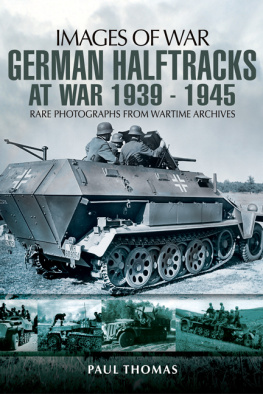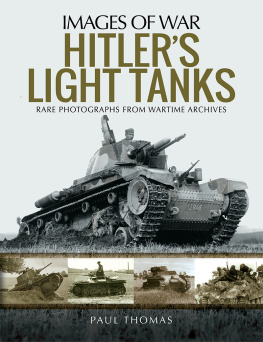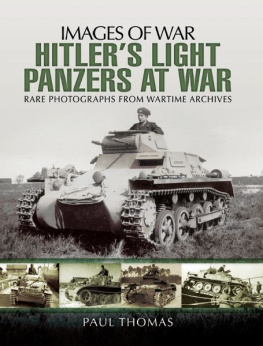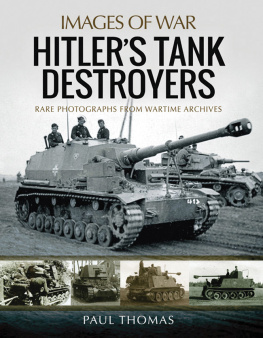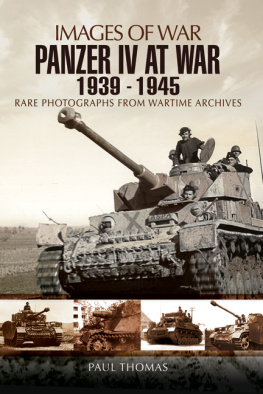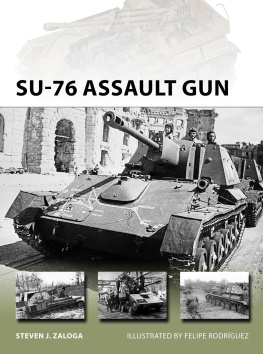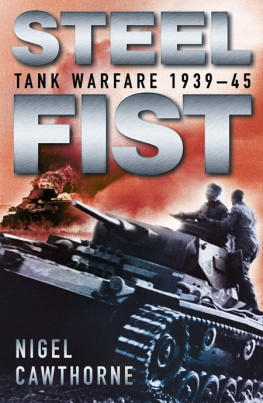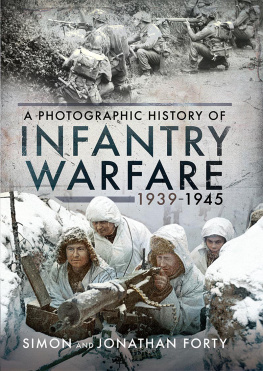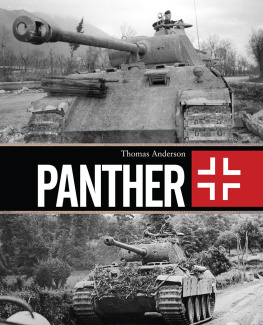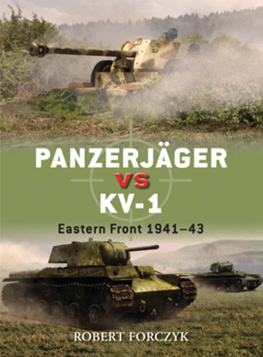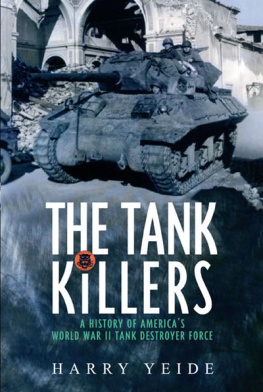
First published in Great Britain in 2012 by
PEN & SWORD MILITARY
An imprint of
Pen & Sword Books Ltd
47 Church Street
Barnsley
South Yorkshire
S70 2AS
Copyright Paul Thomas, 2012
ISBN 978-1-84884-482-7
ISBN 978-1-78303-852-7
The right of Paul Thomas to be identified as author of this work has been asserted by him in accordance with the Copyright, Designs and Patents Act 1988.
A CIP catalogue record for this book is available from the British Library.
All rights reserved. No part of this book may be reproduced or transmitted in any form or by any means, electronic or mechanical including photocopying, recording or by any information storage and retrieval system, without permission from the Publisher in writing.
Typeset by Concept, Huddersfield, West Yorkshire
Printed and bound in England by CPI Group (UK) Ltd, Croydon, CR0 4YY
Pen & Sword Books Ltd incorporates the imprints of Pen & Sword Aviation,
Pen & Sword Family History, Pen & Sword Maritime, Pen & Sword Military,
Pen & Sword Discovery, Wharncliffe Local History, Wharncliffe True Crime,
Wharncliffe Transport, Pen & Sword Select, Pen & Sword Military Classics,
Leo Cooper, The Praetorian Press, Remember When, Seaforth Publishing and
Frontline Publishing.
For a complete list of Pen & Sword titles please contact
PEN & SWORD BOOKS LIMITED
47 Church Street, Barnsley, South Yorkshire, S70 2AS, England
E-mail:
Website: www.pen-and-sword.co.uk
Introduction
T he performance of the German Army on the battlefield was attributed mainly to one vehicle that transported troops, ordnance and supplies to the front. It was called the half-track. These front-wheel steering vehicles with tracked drive transformed the fighting ability of both the Wehrmacht and Waffen-SS during the Second World War. This book reveals the complete illustrated history of the half-track and shows just how versatile these vehicles were in combat. Various half-tracks were built during the war, and production of the Sd.Kfz.251 variant, for instance, saw over 16,000 of them pour off the production line between 1940 and late 1944.
The book analyzes the development of the half-track and shows its increased role in combat, where newer variants were given main armaments in order to increase the overall firepower on the battlefield and support the advancing troops and Panzers to the front lines.
The full range of Hitlers half-tracks is covered in this book, ranging from the Sd.Kfz.10, Sdk.Kfz.7/1 self-propelled flak gun, Sd.Kfz6 and Sd.Kfz.8 prime mover, to the most popular half-track of them all, the Sd.Kfz.251 medium infantry armoured vehicle. Despite being lightly armoured, the Sd.Kfz.251 could maintain a relatively modest speed and manoeuvre across country and keep up with the fast moving armoured spearheads.
German Half-tracks at War is a captivating glimpse of these formidable machines, and will undoubtedly be of great interest to military historians as well as modellers and war-gamers.
Chapter One
Early Years of Victory
T he invasion of Poland was the first time that the half-track was used extensively on the battlefield. Whilst the bulk of the Wehrmacht was still animal draught in 1939, there were only a few hundred vehicles that were half-track to tow ordnance, carry troops and supplies to the battlefront.
Spearheading one of the first promising attacks into Poland on 1 September 1939 was Army Group North, under the command of General Gnther Hans von Kluges Fourth Army. Kluge controlled five infantry divisions, plus two motorized divisions and the Third Panzer Division under General Heinz Guderian. The main thrust of the Fourth Army was east and south, sealing off and then destroying General Bortnowskis Pomorze Army, which was situated in what was known as the Polish corridor. All main efforts were carried out by the armys XIX Corps, under the faithful command of the Panzer ace, General Heinz Guderian. Bearing the brunt of this German armoured stampede stood the Pomorze Army, which consisted of five infantry divisions and one cavalry brigade. Throughout the first day of intensive fighting, Kluges army caused such severe losses to the Pomorze Army that it was forced to reluctantly withdraw in total confusion.
Further east, separated by the Polish corridor in East Prussia, General Georg von Kuechlers Third Army made a number of thrusting all-out attacks south from the Prussian border in the direction of Warsaw against the Polish Narew Group and Modlin Army. Under Kuechlers command were seven advanced infantry divisions, an ad hoc panzer division consisting of SS-Panzer Division Kempf , which incorporated SS-Panzer Regiment Deutschland, and four brigade-size commands, all of which were divided under three corps.
To the south, German forces were inflicting almost equal misery upon the enemy. Army Group Souths main task was to try and engage the enemy as far forward of the Vistula and eliminate any attempt he might make to retreat east behind the line of the Vistula and San. It was for this reason that the Southern Army Group were ordered to reach the Vistula and San with the greatest possible speed.
Over the next few days both the German Northern and Southern groups continued to make furious thrusts on all fronts. As this great advance gathered momentum, more towns and villages fell to the onrushing forces. The campaign had taken on the character that was to remain for the few weeks that followed. Everywhere north, south and east, the fronts were shrinking, cracking slowly but surely under the massive German pressure. In this unparalleled armoured dash, some units had covered 40 miles 60 road miles in just twenty-four hours.
By 18 September, the invasion of Poland was more or less sealed. The half-track had clearly demonstrated its effectiveness, not just as a weapon of war, but as a versatile machine that had kept up with the thrusting Panzers and supported the infantry as well.
Astonished by the successive gains of the Panzers and supporting armour, eight months later on 10 May 1940, Hitler finally decided to attack the west, which comprised the invasion of Holland, Belgium and Luxembourg.
For the attack against the west the German Army were divided into three army groups Army Group A, B and C. The main strike would be given to Army Group A, which would drive its armoured units through the Ardennes, and then swing round across the plains of northern France and then make straight for the Channel coast, thereby cutting the Allied force in half and breaking the main enemy concentration in Belgium between Army Group A advancing from the south and Army Group B in the north. The task of Army Group B was to occupy Holland with motorized forces and to prevent the linking up of the Dutch army with the Anglo-Belgian force. It was to destroy the Belgian frontier defences by a rapid and powerful attack and throw the enemy back over the line between Antwerp and Namur. The fortress of Antwerp was to be surrounded from the north and east and the fortress of Liege from the north-east and north of the Meuse.
Army Group C, which was the most southern of the three army groups, was to engage the garrison of the Maginot Line, penetrating it if possible.
Apart from the masses of tanks and other armoured vehicles in the Panzerwaffes arsenal, to support the Blitzkrieg there was a single company of ten 88mm FlaK 18 on Zugkraftwagen . These 88mm flak guns were mounted on the chassis of an armoured Sd.Kfz.7 half-track in order to give much needed firepower support against the thickly armoured British Matilda and French Char B tanks.

